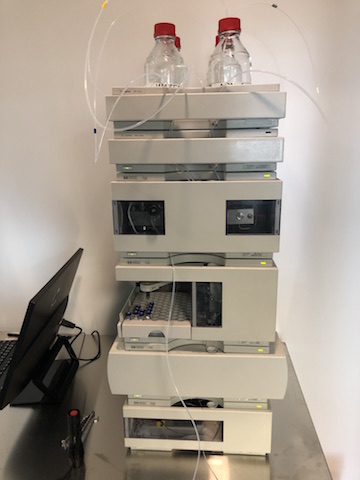What is a matrix effect? Well, all testing of cannabinoid products has matrix issues. The matrix is simply everything else in a CBD (THC) product that isn’t derived from the cannabis plant. The gum in a gummy bear, the sugar in a sour candy, the chocolate in a candy bar: all of those is part of the matrix of those particular products. Since the cannabinoids are present in relatively low concentrations ( ~ 10 mg/serving ), the vast majority of the product is matrix material.
Testing of cannabinoid products
Think of a brownie or cookie containing 10 mg CBD. The product may weigh several grams, leaving a CBD concentration of < 1%. All the other stuff is just a huge nuisance for the CBD assay. The analyst must prepare the sample, removing as much of the unwanted material as possible, without affecting the amount of CBD present. Several protocols are available for these difficult product classes. Generally, the sample preparation is lengthy and tedious and must be accomplished by experienced analytical chemists. The multi-step protocols can introduce errors at each step, and indeed, these errors can add up to a meaningless assay result.
Sample preparation is often glossed over for simpler matrices. “Dissolve sample in solvent, dilute, and then inject the prepared material into the instrument.” But what does dissolve mean? How do we know that the sample is dissolved? Well, with a nice crystalline substance in a “strong solvent” (think salt in water), this is rather trivial. One can easily visually verify that the salt crystals are totally dissolved. For messier systems such as CBD concentrate, where the analyte is a gooey mess, just getting the sample into a flask is hard indeed. Anyone who has played with concentrates knows how sticky and intractable they are. There is a good chance a substantial amount of concentrate will end up on the outside of the analysis flask, on the balance, and on your table. Careful practice can mitigate these issues, but it is still a difficult assay even for an experienced analyst.
CBD Oil Testing
The situation is even more interesting when quantitating CBD solutions in vegetable oils. MCT (coconut oil) is a favorite diluent for CBD. CBD is extremely soluble in MCT, making it a perfect matrix for sublingual or oral formulations. This extreme solubility coupled with the nature of MCT can cause errors. What “nature of MCT” causes problems? Well, this oil is reluctant to dissolve in most organic solvents, and since the CBD prefers to stay with the oil, considerable efforts must be undertaken to completely dissolve the MCT. Not just dissolve the CBD, but all of the MCT. A few undissolved droplets can contain a substantial amount of CBD, owing to its high solubility and preference for MCT.
How does the analyst determine that all the MCT is dissolved? Indeed, the MCT aliquot sits at the bottom of a solvent containing flask and just breaks into smaller droplets with shaking. Eventually, the MCT will dissolve, but it can take much longer than expected. And since we are not talking about shiny crystals to observe, one must see all droplets disappear, including difficult to see microdroplets. The difficulties in observing the microdroplets, coupled with impatience, leads to errors. Often these errors underestimate the CBD present since the cannabinoid has not been completely removed from its matrix.
Bottom line: matrix testing is difficult. Make sure you use an experienced analyst for these types of products. If you have any questions on testing of cannabinoid products feel free to contact us!
